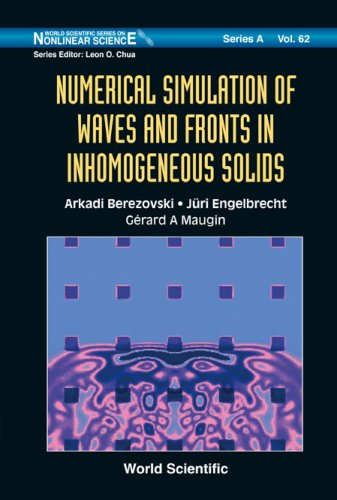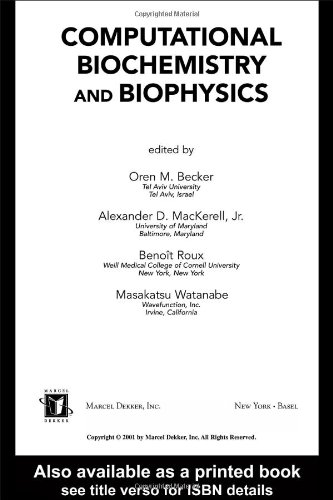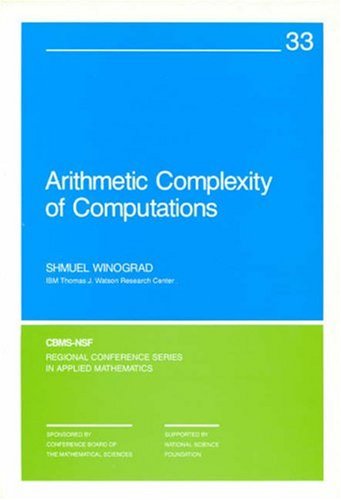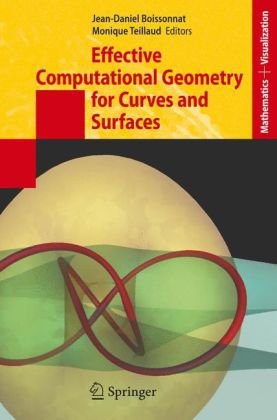Arkadi Berezovski, Jüri Engelbrecht, Gérard A Maugin981283267X, 9789812832672
Contents: Material Inhomogeneities in Thermomechanics; Local Phase Equilibrium and Jump Relations at Moving Discontinuities; Linear Thermoelasticity; Wave Propagation in Inhomogeneous Solids; Macroscopic Dynamics of Phase Transition Fronts; Two-Dimensional Elastic Waves in Inhomogeneous Media; Two-Dimensional Waves in Functionally Graded Materials; Phase Transitions Fronts in Two Dimensions; Dynamics of a Straight Brittle Crack.
Table of contents :
Contents……Page 8
Preface……Page 6
1.1 Waves and fronts……Page 14
1.3 Driving force and the corresponding dissipation……Page 15
1.4 Example of a straight brittle crack……Page 16
1.5 Example of a phase-transition front……Page 17
1.6 Numerical simulations of moving discontinuities……Page 18
1.7 Outline of the book……Page 20
2.1 Kinematics……Page 22
2.2 Integral balance laws……Page 24
2.3.1 Local balance laws……Page 25
2.3.2 Jump relations……Page 26
2.4 True and quasi-material inhomogeneities……Page 27
2.4.1 Balance of pseudomomentum……Page 28
2.5 Brittle fracture……Page 31
2.5.1 Straight brittle crack……Page 33
2.6.1 Jump relations……Page 36
2.6.2 Driving force……Page 37
2.7 On the exploitation of Eshelby’s stress in isothermal and adiabatic conditions……Page 38
2.7.1 Driving force at singular surface in adiabatic conditions……Page 40
2.7.2 Another approach to the driving force……Page 41
2.8 Concluding remarks……Page 42
3. Local Phase Equilibrium and Jump Relations at Moving Discontinuities……Page 43
3.1 Intrinsic stability of simple systems……Page 44
3.2.1 Classical equilibrium conditions……Page 46
3.2.2 Local equilibrium jump relations……Page 48
3.3 Non-equilibrium states……Page 50
3.4 Local equilibrium jump relations at discontinuity……Page 51
3.5 Excess quantities at a moving discontinuity……Page 53
3.6 Velocity of moving discontinuity……Page 56
3.7 Concluding remarks……Page 57
4.1 Local balance laws……Page 58
4.3 Jump relations……Page 60
4.4.1 One-dimensional elasticity……Page 61
4.4.2 Averaged quantities……Page 63
4.4.3 Numerical fluxes……Page 64
4.4.5 Conservative wave propagation algorithm……Page 65
4.5.1 Excess quantities and numerical fluxes……Page 66
4.5.2 Riemann problem……Page 68
4.5.3 Excess quantities at the boundaries between cells……Page 69
4.6 Concluding remarks……Page 70
5. Wave Propagation in Inhomogeneous Solids……Page 72
5.2 One-dimensional waves in periodic media……Page 73
5.3 One-dimensional weakly nonlinear waves in periodic media……Page 75
5.4 One-dimensional linear waves in laminates……Page 78
5.5 Nonlinear elastic wave in laminates under impact loading……Page 81
5.5.1 Problem formulation……Page 83
5.5.2 Comparison with experimental data……Page 84
5.5.3 Discussion of results……Page 90
5.6 Waves in functionally graded materials……Page 93
5.7 Concluding remarks……Page 96
6. Macroscopic Dynamics of Phase-Transition Fronts……Page 98
6.1 Isothermal impact-induced front propagation……Page 100
6.1.1 Uniaxial motion of a slab……Page 101
6.1.2 Excess quantities in the bulk……Page 103
6.1.3 Excess quantities at the phase boundary……Page 104
6.1.4 Initiation criterion for the stress-induced phase transformation……Page 106
6.1.5 Velocity of the phase boundary……Page 110
6.2.2 Comparison with experimental data……Page 113
6.3 Interaction of a plane wave with phase boundary……Page 115
6.3.1 Pseudoelastic behavior……Page 117
6.4.1 Formulation of the problem……Page 122
6.4.3 Initiation criterion for the stress-induced phase transformation in adiabatic case……Page 125
6.4.4 Velocity of the phase boundary……Page 128
6.4.5 Temperature field……Page 130
6.5 Numerical simulations……Page 131
6.5.1 Pulse loading……Page 132
6.5.2 Temperature distribution……Page 133
6.5.3 Kinetic behavior……Page 135
6.6 Concluding remarks……Page 138
7. Two-Dimensional Elastic Waves in Inhomogeneous Media……Page 140
7.1.1 Averaged quantities……Page 141
7.1.2 Conservation law……Page 142
7.2 Fluctuation splitting……Page 143
7.3 First-order Godunov scheme …….Page 146
7.4.1 Vertical transverse propagation……Page 148
7.4.2 Horizontal transverse propagation……Page 150
7.5 Numerical tests……Page 152
7.6 Concluding remarks……Page 158
8.1 Impact loading of a plate……Page 160
8.2 Material properties……Page 162
8.3 Numerical simulations……Page 164
8.4 Centreline stress distribution……Page 166
8.5 Wave interaction with functionally graded inclusion……Page 168
8.6 Concluding remarks……Page 170
9.1 Material velocity at the phase boundary……Page 174
9.2 Numerical procedure……Page 176
9.3 Interaction of a non-plane wave with phase boundary……Page 177
9.4 Wave interaction with martensitic inclusion……Page 179
9.5 Concluding remarks……Page 181
10. Dynamics of a Straight Brittle Crack……Page 184
10.1 Formulation of the problem……Page 185
10.2 Stationary crack under impact load……Page 186
10.3 Jump relations at the crack front……Page 188
10.4 Velocity of the crack in mode I……Page 189
10.4.1 Zero excess stress……Page 191
10.4.2 Non-zero excess stress……Page 192
10.5 Concluding remarks……Page 195
11. Summing Up……Page 198
Appendix A Thermodynamic interaction between two discrete systems in non-equilibrium……Page 202
A.1.1 Contact quantities……Page 203
A.1.2 Partial contact quantities……Page 206
A.2.1 Replacement quantities……Page 208
A.2.2.1 The subsystems……Page 210
A.2.2.2 The composite system……Page 212
A.3.1 The inequalities……Page 213
A.3.2 Energy and entropy……Page 214
A.3.3 Example: An endoreversible system……Page 216
A.3.4.2 Excess energy……Page 218
A.4 Concluding remarks……Page 219
Bibliography……Page 222
Index……Page 234







Reviews
There are no reviews yet.